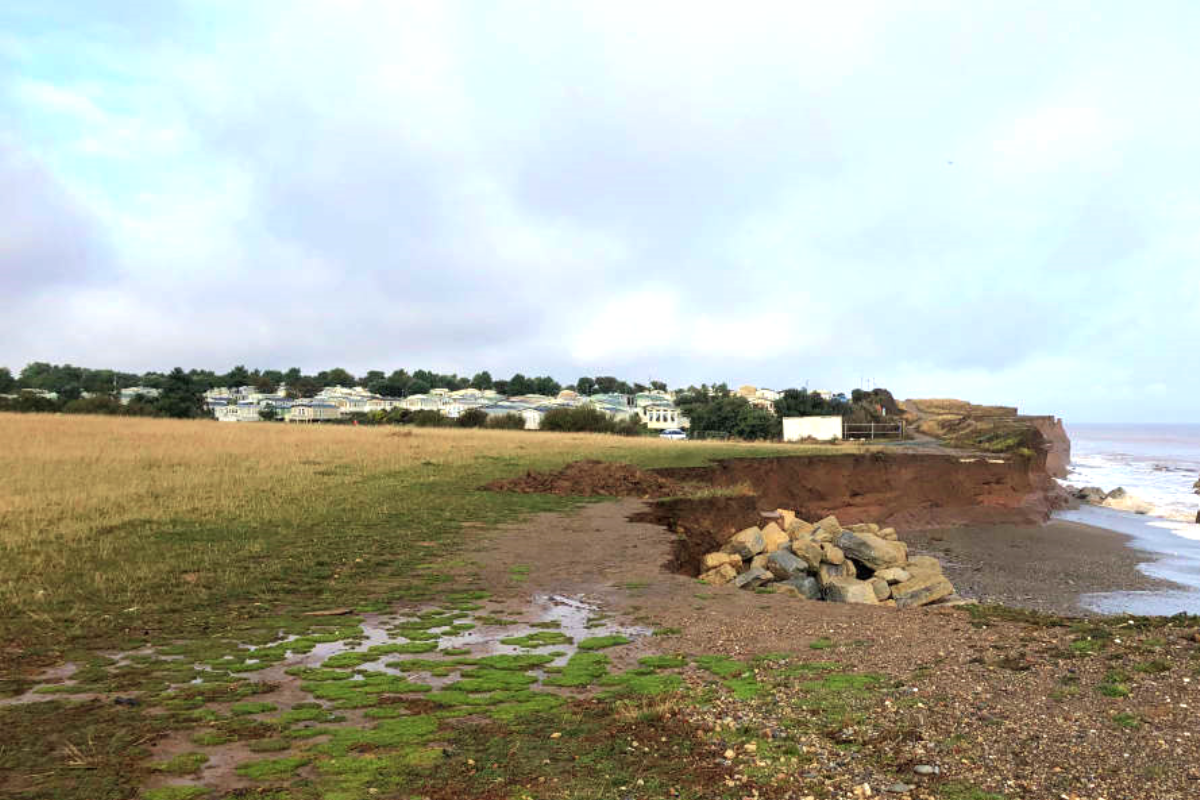
A Filey Councillor is calling for work to start on updating the area's shoreline management plan.
The recent spell of wet weather has highlighted the need for a new Shoreline Management Plan for the Yorkshire Coast.
That's the view of Filey Councillor Sam Cross who says the current plan hasn't been update for many years.
He says the recent rainfall has highlighted issues of coastal erosion.
Shoreline management plans are developed by Coastal Groups with members mainly from local councils and the Environment Agency. They identify the most sustainable approach to managing the flood and coastal erosion risks to the coastline in the:
- short-term (0 to 20 years)
- medium term (20 to 50 years)
- long term (50 to 100 years)
The existing plan for the North Yorkshire Coast is was last updated in 2018, the section dealing with the Filey area suggested there were:
"869 residential and 204 commercial properties at risk from coastal erosion or slope instability over the 100 year appraisal period"
Councillor Cross says work needs to start now on revising the long term plan.
Last year East Riding Council was awarded £36m as part of a government programme to explore innovative approaches of adapting to the effects of coastal erosion.
Emma Howard Boyd, Chair of the Environment Agency, said:
“England’s coastline has never been static. Today, 9,000 kilometres of open English coast is at risk from sea flooding, erosion and landslips, and by 2100 once-a-century sea level events are set to become annual events.
“As a minimum, we need to plan for at least a metre rise of sea level rise by the end of the century. In some places the pace and scale of change may be so significant that, over a period of time, coastal authorities will need to help local communities transition away from the current shoreline over time.
“This programme is about providing that local support while increasing the whole country’s expertise and resilience in the face of climate and coastal change.”
The East Riding of Yorkshire was selected for the project alongside North Norfolk as between them they include 84% of the properties at risk of coastal erosion in England over the next 20 years.





 Injured Yorkshire Coast Seal Back in the Water
Injured Yorkshire Coast Seal Back in the Water
 Flamingo Land Welcomes Baby Giraffe
Flamingo Land Welcomes Baby Giraffe
 Scarborough and Whitby MP to Launch Petition for Return of Stroke Services
Scarborough and Whitby MP to Launch Petition for Return of Stroke Services
 UK Mayors Being Urged to Buy Scarborough Buses
UK Mayors Being Urged to Buy Scarborough Buses
 Free Music Events in Scarborough to Raise Funds for Andy's Man Club
Free Music Events in Scarborough to Raise Funds for Andy's Man Club
 Scarborough's Cross Lane Hospital Receives Heartfelt Gift
Scarborough's Cross Lane Hospital Receives Heartfelt Gift
 Saint Catherine’s Becomes First UK Hospice to Launch Masonic Aware Initiative
Saint Catherine’s Becomes First UK Hospice to Launch Masonic Aware Initiative
 Candidates Confirmed for First Scarborough Town Council Elections
Candidates Confirmed for First Scarborough Town Council Elections
 Scarborough Station Set for Multi-Million-Pound Roof Renovation
Scarborough Station Set for Multi-Million-Pound Roof Renovation
 Renewed Appeal Following "Shocking" Arson in Whitby
Renewed Appeal Following "Shocking" Arson in Whitby
 Six Candidates Standing to Become First Elected Mayor of Hull and East Yorkshire
Six Candidates Standing to Become First Elected Mayor of Hull and East Yorkshire
 Construction to Start on Whitby Maritime Hub
Construction to Start on Whitby Maritime Hub








Comments
Add a comment